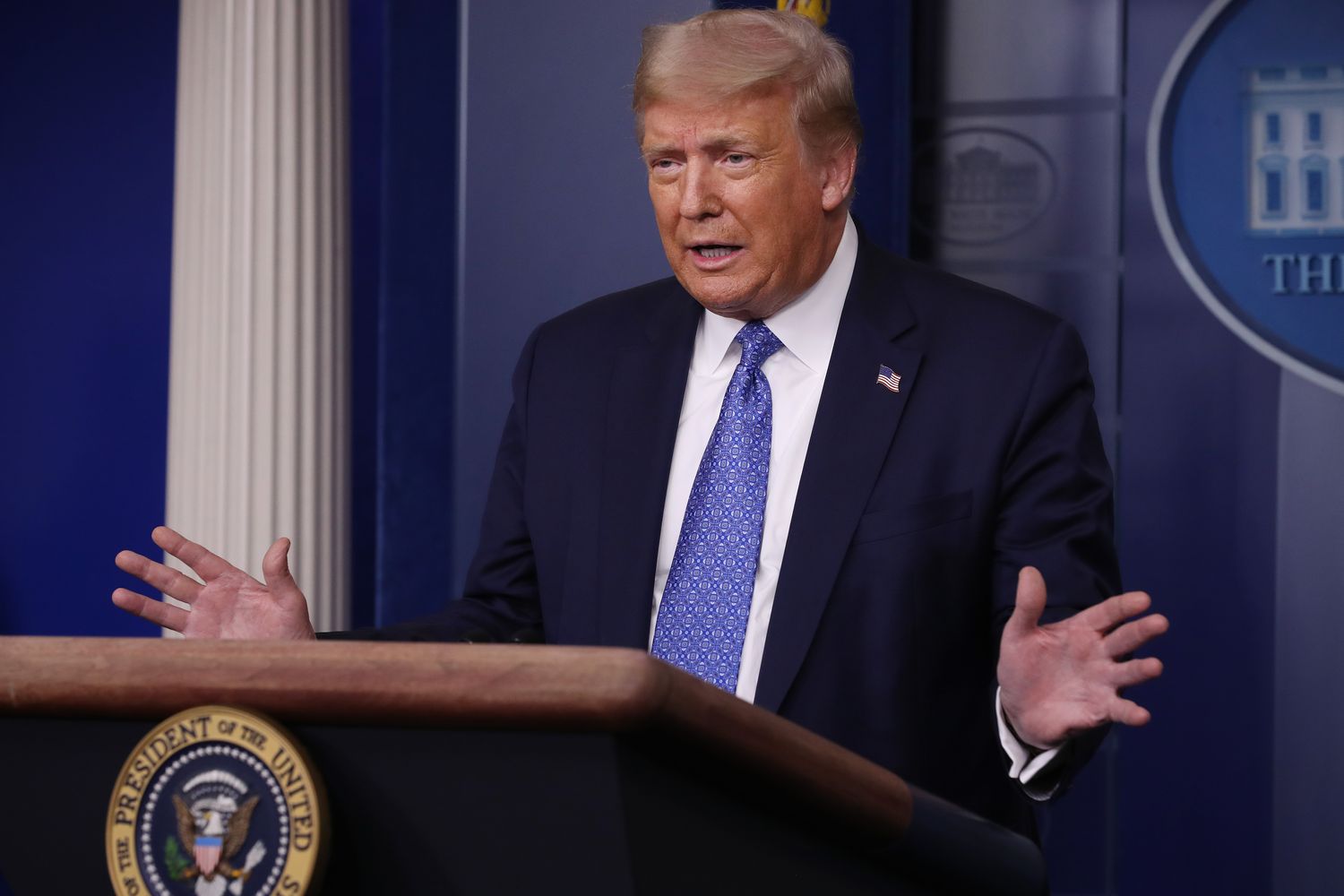
President Donald Trump will consider a face mask requirement for federal buildings nationwide, a White House spokesperson said Wednesday after the president said he would make a decision on the issue in the next 24 hours.
In his second coronavirus briefing in two days, Trump was asked whether he would encourage federal buildings and the White House campus to abide by a mask mandate issued by the mayor of the nation’s capital. He said he would weigh the option.
The support for wearing masks was the second instance in as many days that Trump made a point to emphasize public health measures he’d previously been ambivalent about, as states around the country continue to record record levels of coronavirus infections. The national daily death toll topped 1,000 once again on Wednesday.
But despite mostly reining in his hyperbole, overly optimistic projections for the track of the virus, and political talking points in the resumption of briefings on Tuesday, the president hit those elements in his comments on Wednesday. Trump suggested that his wall on the U.S.-Mexico border made a difference in keeping the virus at bay and that mass protests against police brutality contributed to the latest surge in Sun Belt states.
“Cases started to rise among young Americans shortly after demonstrations, which you know very well about,” Trump said, though there is no clear-cut public health data showing the protests were a major driver of the recent surge in cases. Trump argued that weeks of unrest in cities across the country “presumably triggered a broader relaxation of mitigation efforts nationwide,” though many of the states seeing serious outbreaks now had already begun to loosen virus-related restrictions weeks earlier.
“A substantial increase in travel also was a cause,” Trump continued, also mentioning large gatherings over the Memorial Day weekend — to which many public health experts have pinned the recent surge — and young people congregating in bars and on beaches.
“We’re also sharing a 2,000-mile border with Mexico, as we know very well, and cases are surging in Mexico, unfortunately,” the president noted. He then linked the issue to immigration, pointing to the mutual decision between the two countries’ leaders to close that border except for essential travel.
Trump then offered that his wall along the southern border “has had a great positive impact on people coming in, and we have record low numbers of people coming in illegally. That’s helped greatly.” The wall “was really meant for a different purpose, but it worked out very well for what we’re doing right now and for the pandemic,” Trump added.
The president remained defensive about his handling of the pandemic, however, pushing back when a reporter asked whether he was sending federal law enforcement to Democratic-led cities in order to distract from what Chicago’s mayor said was a “failure” on the coronavirus.
“We haven’t had that failure,” Trump said, adding later: “I think we’ve done some amazing things and I think you’ll probably see that.”
He also continued to push for schools to reopen for in-person instruction in the fall, despite hesitance from local leaders, public health officials and teachers unions, as well as little public support for a full reopening. The president said he would be OK sending his teenage son and young grandchildren back into classrooms.
And while Trump noted that there had been therapeutic advancements for treating coronavirus patients, he implied it would be on a “very short period of time” before, “to a certain extent,” there is a cure for the virus — though clinical trials for potential vaccines are still underway.
He ended the briefing in dramatic fashion, as he disputed the claim by his likely Democratic rival, Joe Biden, that Trump is the first racist to be elected president.
After claiming that no other president had done more for Black, Latino and Asian employment than he has, particularly in light of the pandemic, Trump went so far as to say he had “done more for Black Americans than anybody, with the possible exception of Abraham Lincoln.”
“Nobody has even been close,” Trump said, before turning and walking out of the briefing room.
David Lim contributed to this report.
Source: politico.com
See more here: news365.stream






